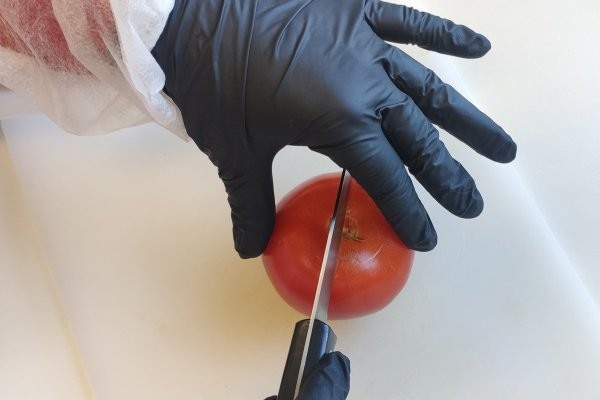In the supermarket, consumers judge the quality of fruits and vegetables by paying attention to various attributes, such as color, firmness, and freshness. But how do consumers assess the freshness and firmness of tomatoes at home while preparing and then consuming the produce? How do actions such as cutting tomatoes affect their perception?
The public-private partnership Future Sensors & Digital Twins is investigating how freshness and shelf life are assessed and how we can apply innovative methods such as non-destructive sensors. As part of this project, a study was conducted on the influence of handling, only looking and feeling the produce or also cutting, on freshness and firmness perception.

First panellists had to rate tomatoes for both visual properties and firmness by looking and feeling the product. Secondly, panelists performed a cutting protocol to cut the same tomatoes and again determine freshness and firmness. Freshness and firmness were rated on average 5-10% lower during the first visual test compared to the cutting test. Medium tomatoes had larger differences in the ratings of freshness and firmness compared to cocktail tomatoes. Differences between the two tests were also larger for old tomatoes compared to fresh tomatoes. There was a positive correlation between the tests for both freshness and firmness with a Pearson correlation of 0.60 for both freshness and firmness.
This research shows that freshness and firmness are rated lower during an assessment of visual properties and texture compared to cutting of tomatoes. This may indicate that consumers do not buy products because of low freshness perception in the store, while the product is still rated as fresh enough during slicing.
Source: wur.nl
